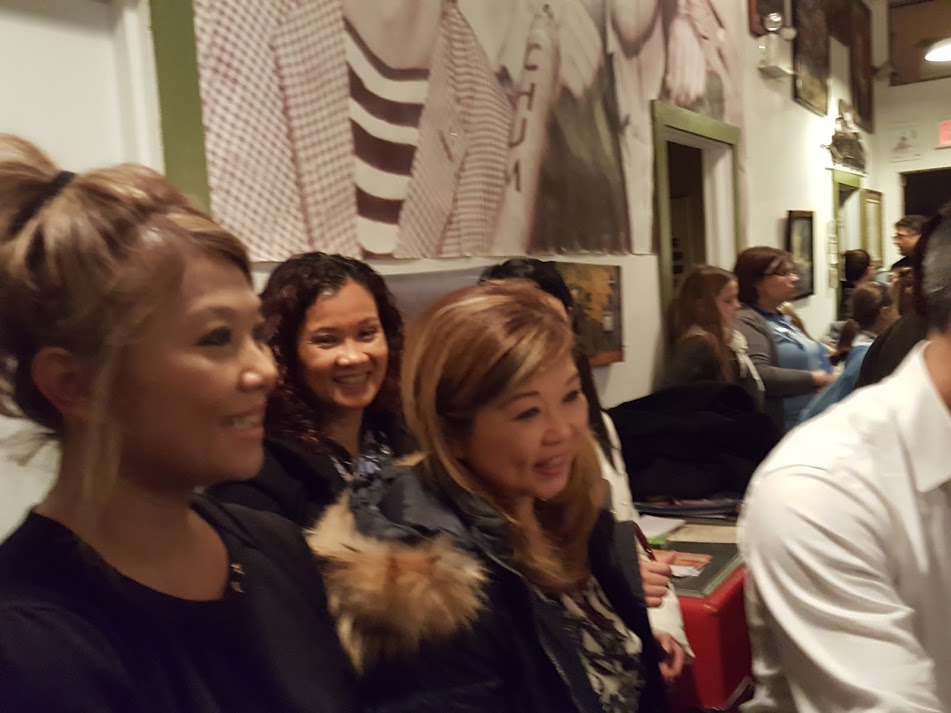 Susan Gibson attended the launch of Adrift at Sea and she wrote about the fabulous evening on her blog here.
Susan Gibson attended the launch of Adrift at Sea and she wrote about the fabulous evening on her blog here.
writes about war from a young person's view #bannedbyrussia
 Susan Gibson attended the launch of Adrift at Sea and she wrote about the fabulous evening on her blog here.
Susan Gibson attended the launch of Adrift at Sea and she wrote about the fabulous evening on her blog here.
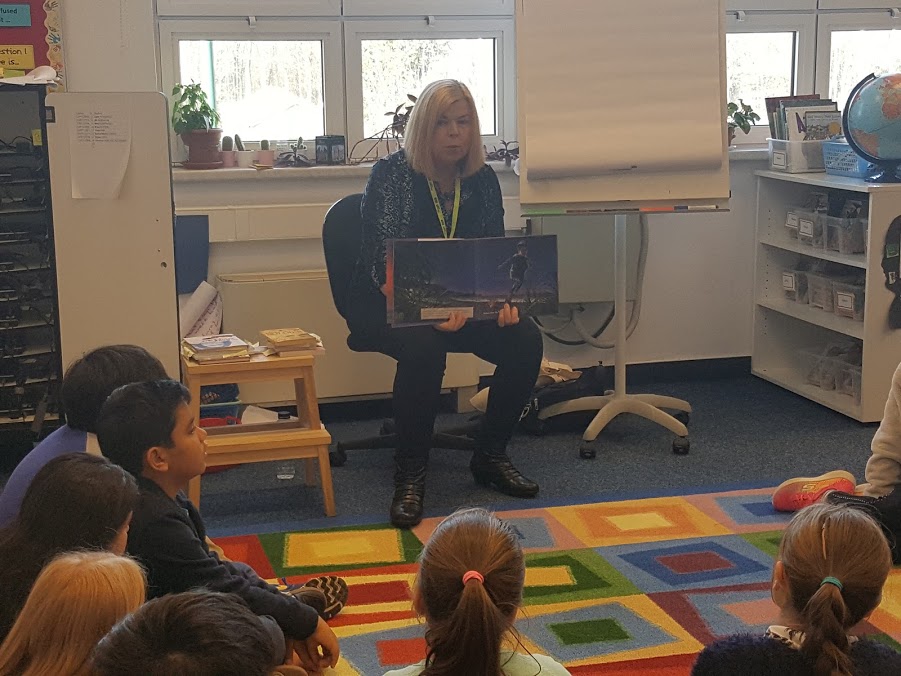 From Laura Fabiani and Sandra Olshaski on their blog Library of Clean Reads:
From Laura Fabiani and Sandra Olshaski on their blog Library of Clean Reads:
Laura says “I highly recommend this book as a teaching tool and feel that it should be in every library. It’s books like this that will make history come alive for our next generation of children.”
And Sandra says “The soft-focus artwork done by Brian Deines that illustrates each page is amazing….The author has produced a very readable book that both parents and children should read together. I highly recommend this beautiful book.”
From Literacy Daily: “The evocative text and powerful illustrations, painted with oils, enable readers to feel as though they, too, are refugees adrift at sea during this risky journey to freedom.”
Sal’s Fiction Addiction says “The authors include personal photographs of Tuan’s family, before their escape and following their settling in Canada, to help readers understand this historical moment in time….Brian Deines (as he always does) has created truly beautiful artwork using oils on canvas to bring Tuan’s story to this book’s readers.”
Sherry Early’s Semicolon says: This nonfiction picture book opens with a bang. The illustrations in this book, full color paintings, are absolutely stunning….Brian Deines, has outdone himself in two-page spreads that bring this refugee story to life….[A] good introduction to the subject of the Vietnamese boat people…”
A surprise snow storm didn’t keep people away from coming to the Station Cafe on Dec 6th. We had a packed house!
Tuan came with his entire family and we all autographed the books that were sold that night. Proceeds of the event were donated to the Brant Anglican Churches Support for Syrian Refugees. Sweets were provided by the Brant Anglican Churches refugee committee. The Family Literacy Committee of Brant, Kids Can Fly and the St. George Girl Guides hosted the event. Many thanks to Mike Tutt and the Station Cafe for the great venue.
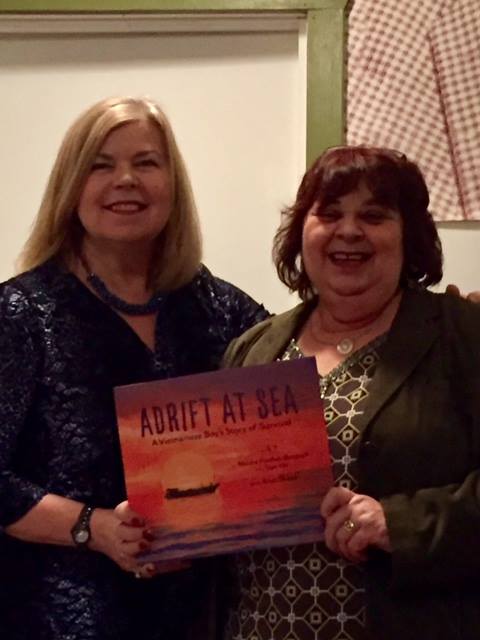
Here I am with the amazing Sharon Brooks of Kids Can Fly. Sharon was the master organizer of the launch. Sharon is dedicated to improving the lives of the kids of Brant (she has my vote for being a woman selected for Canadian currency!)
 Molly invited me to her place for some Glögi on Sunday night so we could meet and chat about the presentations I’d be doing the next two days. Continue reading “Visiting International School of Helsinki”
Molly invited me to her place for some Glögi on Sunday night so we could meet and chat about the presentations I’d be doing the next two days. Continue reading “Visiting International School of Helsinki”
Stacey had arranged a taxi pick up for me from Vila Paris Hotel at 5:15 am on Sat November 19th so I’d be in plenty of time for my 8 am flight. You can’t easily get from Bucharest to Helsinki in November, so my flight was to Heathrow, with a 7 hour layover, then on to Helsinki. Continue reading “Visiting Helsinki”
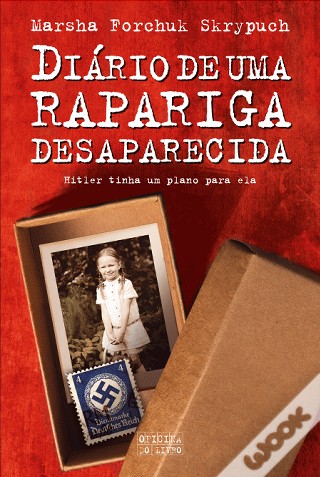 How nifty is this? The title is Diary of a Young Girl Missing (according to google translate …)
How nifty is this? The title is Diary of a Young Girl Missing (according to google translate …)
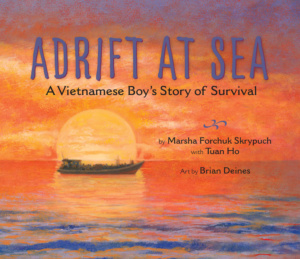 “The text is terse and unembellished, leaving the images to capture the emotions through color and perspective—and they do so with compelling immediacy.”—Booklist
“The text is terse and unembellished, leaving the images to capture the emotions through color and perspective—and they do so with compelling immediacy.”—Booklist
“[A] remarkable tale of perseverance that involved attacks from soldiers, a broken boat at sea, and a trip that was intended to last four days but went horribly awry….This is a solid informational resource that can be used for introducing a refugee’s experience.”—School Library Journal
“As she did in The Last Airlift and One Step at a Time, Skrypuch uses one child’s story to give moving insight into the experience of the many children who escaped war-ravaged Vietnam to start new lives….Deines’s (Elephant Journey) hazy oil paintings poignantly capture the family’s physical ordeal and anguish during their perilous journey.”—Publishers Weekly
“From the illustration of a lone boat adrift in a wash of dry heat that graces the cover of Adrift at Sea, to the dark and engrossing images of Tuan’s steps along the journey, Brian Deines’ art is evocative and integrative, resplendent in complementary colours of orange and golds and blues and purples.”—CanLit for LittleCanadians
“…detailed authors’ notes include history, photographs, and maps. The warm undertones in Deines’ oil paintings evoke tropical Vietnam.”—Kirkus Reviews
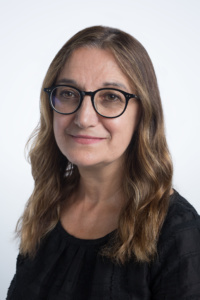
Can you tell me about Tinlids? / What should authors and illustrators know about Tinlids?
Tinlids is a Canadian book wholesaler that sells to schools and public libraries across Canada. We are the official wholesaler for the Ontario Library Association Forest of Reading program. In addition to our website (tinlids.ca) and other online presence (facebook, twitter, instagram), we also have a 5,500 sq ft showroom in north Toronto, that anyone can shop in from Monday-Friday. We purchase books from all major and many smaller publishers. We are also a strong supporter of Canadian authors, illustrators and publishers. We make good coffee.
What is your role at Tinlids? My main role is to make good coffee. I also help teachers and librarians with their selections, and make sure we’re carrying the very best books for our customers. I do all of the buying for our showroom and for special school board events. I also provide lots of booktalks and selection help on a daily basis.
What did you do before Tinlids? I worried less, worked shorter hours, had time for parties… I could go on. Okay, I was a social worker, working with children, adolescents and teenage moms. I really loved working with kids, but after eight years I decided I needed a change. One day while I was walking around Toronto and thinking about what I wanted to do next, I discovered The Children’s Book Store. I applied for a job and was hired the next day. It was a dream job. I ended up staying there for 17 years. When the owners (Judy and Hy Sarick) retired, they sold the educational division to Pegasus, which was a huge distribution centre, owned by Chapters. I was the Children’s Collection Development manager there. Pegasus closed after a year, and then I worked for another wholesaler for a couple of years. Two years later, in 2003 I started Tinlids.
Can you describe your typical day?
Contrary to what some might think, I don’t read all day! But I do read every night. A typical day often starts out with a morning meeting with either a customer who is shopping in our showroom, or a publisher rep who is selling me the next season’s titles. Whether I am purchasing for Tinlids, or helping a customer, that can take up most of my day. Sometimes my purchasing meetings last for 4 hours, and I can have 3 or 4 full days of buying in a week. If it’s “show season”, I will be out of the office selling at various school board events, or doing booktalks.
I usually have tons of email and lots of selection to do for customers. Often a customer will give me a budget and ask me to select books for them based on some specific needs. So most of my day is spent thinking about books, buying books for our showroom, selecting books for libraries, or making lists I especially love helping customers start their collection for a new library. It’s great to see new books, but I really love those backlist titles that are still strong core titles for libraries. There are hundreds of gems in the backlist.
What drives you nuts? The declining number of teacher-librarians in the schools. Customers who tell me they don’t want to buy books for their intermediate students because those students don’t read. Scaredy-cat librarians who worry about books that might have a “swear word” in them.
What are you grateful for? Authors and Illustrators who are brave enough to write about sensitive topics that kids want to know about. Publishers who are brave enough to publish those books. Teachers and librarians who are brave enough to buy them. I’m grateful that there are now many more Canadian authors and illustrators than when I started bookselling. And I love the diversity in our Canadian books. I hope it continues to grow.
What is your selection criteria for books? When I’m choosing fiction, especially YA fiction, I need to believe the characters and care about them. They need to have an authentic voice. I don’t like preachy fiction or books with an obvious message that hits you over the head. I love when an author really captures the realities of being a teenager. Authors like Susin Nielsen, Teresa Toten and Martine Leavitt do this well. Remember what you went through as a teen? Or what you wished you had gone through? All the bad choices you made? All the thoughts you had? Thinking about your future, drinking, sex, drugs, the world and how you do or don’t fit into it? I get anxious just thinking about it. I love when authors remember and are true to the crazy messed-up teenage psyche. Those are the brave authors.
Picture books are easier to buy of course, but I still say no to many titles that just aren’t good enough. I choose picture books where the illustrations and text work well together. That might sound simple but it’s not. I like when the illustration tells you a bit more about the character, and when the text is so great that you don’t even need the illustrations. I love books that are great read alouds – again, sounds simple but it’s not. I also love wordless picture books and “advanced” picture books. Advanced picture books are great for junior, intermediate or high school students, and usually provide great starting points for discussion or further exploration of an important subject.
Okay I could go on for hours about this. Don’t get me started on poetry (love it and want more of it), graphic novels (love) and non-fiction (love but pickier about non-fiction). I seriously want to keep talking but if I do, this will end up being a book instead of an interview.
The books I choose have to fit into what I believe our customers want. They have to work for a classroom or library. I want books that will engage our modern students. That doesn’t mean I only want new books. It means I only want fantastic books.
What advice do you have for a first time author or illustrator? If it’s a published author or illustrator, find out which stores or wholesalers are supporting you. If you have a website, mention these stores as a place to purchase. Independent stores and wholesalers that hand-sell your book need your support too. Find out what your bookseller likes about your book. Go see them and ask questions. Be open to honest and constructive feedback. I always say “If you want my honest opinion, you need to be ready to hear that your baby is ugly.” See what your competition is. If you’re writing a picture book about a little girl who is attached to her bunny, it better be as good as (or better than) Knuffle Bunny by Mo Willems! If I bought every book with a bunny in it, I would need to open up a separate store. And call a good shrink… ack! so many bunny books.
What do you see as the future for the book business?
I think booklovers will always need curated lists and a place that showcases them. Sometimes you don’t know you want a book until you see it in a store or a library. I’ve been around long enough to see many different new technologies challenge the physical book and bookstore. I think we will always have people who want that experience of walking into a bookstore or library and being in that social space. I hope that the future will include more diversity from voices we don’t hear from enough.
What I DON’T see is only a digital future in the book industry. Apparently neither does Amazon, since it opened up a bricks and mortar bookstore last year.
Took a weekend trip to Quebec city. Beautiful fall colours. On the way back we couldn’t land in Brantford because there was lightning within kilometers. Waited it out at the Kitchener airport. Chased rainbows all the way home.






